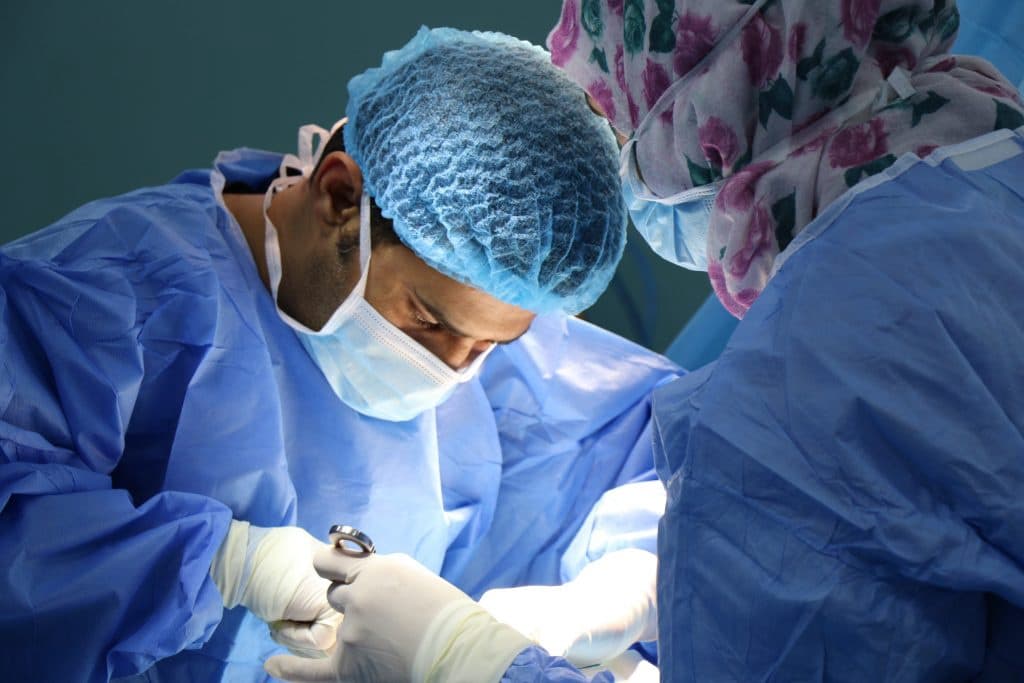Peyronie’s Disease Exercises


- What is Peyronie's Disease and Should I be Worried About It?
- Fixing The Condition
- Peyronie's Exercises
- Alternative Treatments
- FAQ
Peyronie’s Disease Exercises – Peyronie’s Disease and How to Deal With It
It’s hard to live with something that irks you. Irk might not be the correct word here but call it pain, or ailment, or something grave or bothersome, it comes down to being irksome in some ways at the end of it. Be it mental illness, constipation, or Peyronie’s disease, it’s hard to live with something that’s always there, lurking. At times we can completely forget about it but it becomes vital to face it. After all, if we don’t face it, how will we cure it?
Peyronie’s disease is quite common. I know comparing it with mental illness and constipation might have been a bit of a stretch but at the bottom line, it fits. All these three things are annoying and at times, deadly. What, you think having a painful erection isn’t deadly? Okay, it might not be deadly-deadly but anyone who faces this will understand if left untreated, how Peyronie’s disease can be a cause of extreme worry. Before I get carried away I should form a structure and introduce step by step what this condition is all about.
So now that’s what I’ll do, here it is, an article about Peyronie’s disease – what it is, how do you know you have it (Peyronie’s disease is self diagnosable, so that’s sort of an easy thing to do unless you’re in denial) and how to cure this pressing ailment – all packed together in one place. I hope you never need to learn about or face adversaries such as these but being a little informed about one’s body never hurts anyone. So I’d suggest you read on.
What is Peyronie’s Disease and Should I be Worried About It?
Peyronie’s disease might be caused due to scar tissue but it’s completely noncancerous (as in benign), so you don’t need to actually worry about it being deadly. Am I moving ahead too fast and this didn’t make any sense to you? Okay, time for a short recap – Peyronie’s disease is noncancerous (told ya already) penile condition which results from the development of fibrous scar tissue on a penis (due to reasons discussed in a later section) and it causes curved, painful erections (yes, ouch).
Having a curved erection isn’t uncommon or a cause for any concern as many men naturally have a slight curve when they’re erect but Peyronie’s disease causes a considerable bend in the penis or almost always, pain along with it. This is why this condition should not be taken lightly. Other than the curved and painful erections, this condition can actually prevent a man from having any sex by making it difficult to get an erection and then maintain it, even after getting the penis somehow erect. Peyronie’s disease thus remains one of the causes of erectile dysfunction.
Even though it is not very common, shortening of the length of the penis is another common concern that comes with having Peyronie’s disease. This condition can bring some major stress and anxiety into your life.
What exactly happens when you get it?
The formation of scar tissue is almost exclusively associated with this disease. Plaque can develop and you can actually feel it under the skin on touching the penis. They remain to be felt as flat lumps or even a bumpy band of hard tissue. This formation of plaque results in a significant upward or a downward bend – or a bend to one side – of your penis.
And as mentioned earlier, Peyronie’s disease ultimately causes problems getting an erection. Or maintaining an erection becomes hard even if you get one and, in extreme cases, Peyronie’s disease can cause the shortening of a penis. Ah, but what definitely happens is pain, yes, lots of penile pain, even when you’re not trying to have an erection. Erectile dysfunction might be experienced by men sometimes before they start experiencing the pain – yes, some men don’t experience much pain but they’re just lucky.
Although if you have Peyronie’s disease, I won’t say there’s much luck remaining with you because other symptoms that may arise include various penile deformities. Some men with Peyronie’s disease might get weird or funky-shaped erections. I’m talking about the penis getting narrower, or erections with indentations and even an hourglass-like appearance (that’s an hourglass I do not want to lay my eyes on) with a tight, narrow band, that’d be the plaque in there acting up, around the shaft. These shapes really are not a sight to behold, take care of your junior.
Measures One Can Take to Cure Peyronie’s Disease
Peyronie’s disease does not go away on its own (as I said, you’ve got to take care of the junior here) and the condition remains as it is or only worsens, in the case of some men (the extremely unlucky ones, I mean). So it’s necessary to take measures early. Continued treatment, along with Peyronie’s disease exercises, soon after developing the condition may keep it from getting worse. This can even improve the condition and produce a complete cure!
Even when one has had Peyronie’s disease for some time (what were you doing thinking it’ll go away on its own? The crazy ex might take a rest, this won’t), treatment and exercise may help with the pain, improvement of the curvature of the penis and penile shortening.
Exercises to improve Peyronie’s disease and their effectiveness
Peyronie’s disease typically stabilizes after a few months – that’s when it goes from the acute state to chronic – but if you just let it hang it’ll be like you married that crazy ex…it won’t leave easily. The pain during erections usually improves or fades with time – give or take a year or two – but the scar tissue, penile shortening, if any, and the curvature often remain the way it had changed. The curvature will improve if you’re lucky but why not just take matters into your hand and improve things yourself?
Here is an exercise you could try to ease the pain and make things better, by yourself, instead of just waiting for time to fix it all. Hold the tip of the penis with one hand and the base with the other. Now, gently pull the penis away from the body to stretch it to its full length. Hold this stretch for about 30 seconds before letting go.
This gentle stretching – also called milking or jelqing – can be performed once a day and these Peyronie’s Disease exercises should give you a spontaneous erection. If it doesn’t, you should consult a doctor. Other than this, massaging your penis with a lubricant might also help. But if you experience pain, it’s better to consult a specialist. And believe me or not, having a healthy lifestyle, exercising to keep those arteries free of any kind of blockage and even some Kegels every once in a while might help!
Some alternative treatments to Peyronie’s disease exercises
This is when you visit your healthcare provider or a doctor and they use injections and contraptions to fix whatever damage Peyronie’s disease has done to your penis. These are a few things that you can try out along with the exercises mentioned above:
Penile Traction Therapy: This therapy, or PTT, involves wearing a traction device on your penis for a certain amount of time and preferably each day. This helps to straighten or reverse a curve in your penis. A study published in 2019 found that penile traction therapy could provide improvements in lengthening the penis and also correcting the curve during the acute phase of Peyronie’s disease.
Wearing a Vacuum Erection Device: This device, a fancy name for a penis pump, is a vacuum tube that fits over the penis like a sheath and stretches and pulls it with suction. Whether a penis pump makes the penis larger or not is a matter of debate, but they do have a legitimate medical role in helping people with Peyronie’s disease.
Penile Modeling: This is an extremely popular method when it comes to treatments of Peyronie’s disease. This, by all means, should be performed by a trained urologist and involves manually bending the erect penis, in conjunction with collagenase injections, in the opposite direction of the curvature caused by Peyronie’s disease. Pain, bruising, or swelling are side effects of penile modeling and there’s also a risk of penile fracture. Now you see why it’s advised to visit a doctor for this treatment, yes?

Surgery: Surgery is always an option if your Peyronie’s disease gets out of hand. All the above-mentioned methods should be performed either with extreme expertise and care or by a trained medical professional. Surgery should be the last step you take, try and exercise or use the contraptions mentioned above before calling in the cavalry by moving on to surgery.
Frequently Asked Questions
How do you get Peyronie’s disease?
The signs and symptoms of Peyronie’s disease might appear suddenly after an injury or might develop gradually over time due to inheriting it genetically, even without any injury. There are certain factors involved, such as repeated injury, the penis getting hurt during sex, or the formation of scar tissue in an irregular/disorganized manner when you’re healing from an injury. Age and connective tissue disorders also might cause Peyronie’s disease.
How do you diagnose Peyronie’s disease?
As I mentioned, Peyronie’s disease is quite self-diagnosable because you rarely experience similar symptoms in any other case. If you visit a doctor though, they’ll either do a physical exam – feel your penis when it’s flaccid and locate any scar tissue – or do other tests like an ultrasound to find out what’s cooking.



